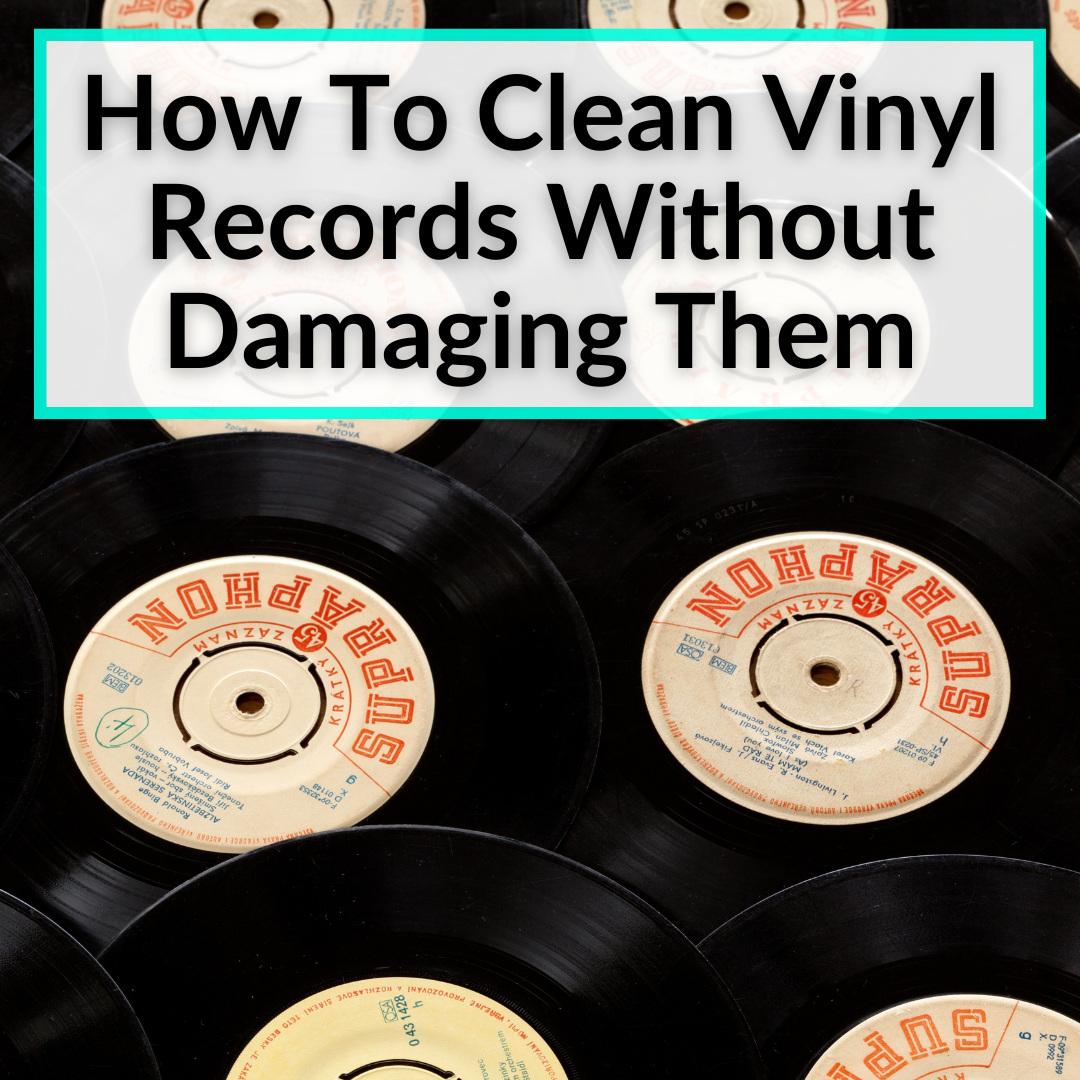 I’ve always found cleaning records to be a hassle.
I’ve always found cleaning records to be a hassle.
But it’s something you need to do if you want to keep your record collection in good shape.
But what’s the best way to clean them?
Read 100 websites and you’ll learn 100 different methods.
The truth is: the best way is to use a vinyl record vacuum cleaner. Unfortunately, they are not cheap.
For most people the best compromise between cost and not doing damage to your records is to use distilled, de-ionized water with a bit of cleaning solution (or dish soap) added.
I cover both methods below.
Keep reading to learn the two best methods for cleaning your vinyl record collection and keeping those discs in optimum condition.
Contents
How To Clean Vinyl Records At Home
If you’ve searching for cleaning methods, you’ve likely come across hundreds of pages, each of them with the secret solution. The truth is, you’re probably better off avoiding most of those methods.
None of them work better than the two methods below and some will actually result in damage to your vinyl records.
There are really only two cleaning methods worth considering and we’ll cover both below.
But before I explain how to clean vinyl records, I want to briefly talk about the best way to handle and store them.
Incorrect handling and storing is the number one cause of damage to records, but even if it doesn’t cause damage, incorrect handling can make your records dirty.
And since the best cleaning method of all is to not have to clean them in the first place, it makes sense to try and minimize the amount of dirt you get on your records.
How To Properly Store And Handle Vinyl Records
The absolute best way to clean your records is to not have to do it at all. Storing and handling your records properly will help minimize how often they need to be cleaned.
Storage
You know those paper sleeves many records come in? Those are actually not a good way to store records. They can damage records chemically. The only safe sleeves are plastic sleeves.
Always store your records vertically and don’t squeeze them together too tight. Never lay them flat and stack them on top of each other. This can warp them.
Handling
The number one rule when handling records is to not touch the surface. Try to touch them only where the label is and on the outer edge, in order to prevent oils from your finger from transferring to the surface of the record. The best way to hold a record is with two hands on the outside edges.
Ideally, you should give your records a quick clean with a carbon fiber brush (or a suitable alternative, like the cloths you use to clean glasses or cell phone screens) every time you play them, one time before playing and one time after.
Finally, it is very important to keep the stylus clean. Since it runs along the grooves of the records, it picks up any dist found there. You want to clean it before and after every use, to prevent it from causing any damage to your vinyl.
Best Way To Clean Vinyl Records
We’ll start with the best option for cleaning, but it will require spending some money
For most casual collectors, the budget method below works just fine. And chances are, you already have all, or most, of the tools required lying around your house.
The best way to clean a record is with a vinyl record vacuum cleaner kit.
Unfortunately, they are not cheap, which is why I don’t generally recommend them for most casual record collectors. Professional ones cost several thousand dollars and even the ones for home use cost several hundred.
Here is an affordable semi-professional kit. If you have the budget, this is a great option.
- Safely removes dust, dirt, grease, grime, etc. from record grooves
- Vinyl-protecting felt cleaning strips
- Same high-performance vacuum motor as more expensive models
- Manual operation saves money over automatic models
- Includes solution, brush, turner and user guide
If that is a bit out of your price range, here is a great home kit I recommend. It also happens to be one of the lowest priced kits available (at least among those that are any good). The main reason it costs less is that you have to turn the record by hand while it is being cleaned.
- Easy To Use
- Cleans All Types Of Vinyl
- Specially Formulated Cleaning Solution
- Made In USA With Limited Lifetime Warranty
- Includes Cleaning Solution, Brushes, Rollers, And Cloths
Cleaning records with a vinyl vacuum cleaner is easy. First you want to remove any loose dust or debris with the brush. Then you apply the cleaning fluid. Finally, you put the record in the vacuum cleaner, which sucks the cleaning fluid out of the grooves along with any dirt.
Your records end up cleaner than with any other method and the risk of doing damage is much lower as well. But due to the cost of the vacuum cleaner, it’s really only worth it if you have a lot of records.
How To Clean A Vinyl Record On A Budget
If you don’t want to spend a few hundred to a few thousand dollars on a vacuum record cleaner, this is the section for you. You do still need a few materials, but there are also some common household products that work just fine as alternatives.
The main drawback of this method is that you need to make some contact with the record and that it may involve the use of soap, which will leave some residue (any soap or cleaning solution will leave some residue).
Materials Needed
Here is what you will need to clean your records using this method.
Warm water
Some people say you should use hot water, but there’s no real benefit to that. If at all possible, the water should be distilled and de-ionized, otherwise the impurities will remain on the surface of the record. You can find de-ionized water in most pharmacies or on Amazon.
Dish soap (or record cleaning solution)
Dish soap is the cheapest option, but it will leave a bit of residue on your records. Record cleaning solution is a better choice, but a bottle will generally cost $10 to $30.
If there are no fingerprints or other oily smudges on the record, you can get a way using just water, which is actually better for the record.
Carbon Fiber Brush
Carbon fiber brushes are ideal, because the carbon fibers remove any static charge that keeps dust sticking to the record’s surface. Here’s a great one that doesn’t cost too much. A decent alternative are those cloths you use to clean glasses or cell phone screens.
Soft, Lint-Free Cloth
You want a cloth that is soft and absorbent and will not leave behind lint. The cloths you use to polish cars work really well and they only cost a few dollars.
Alternative: A Complete Cleaning Kit
There are a number of cleaning kits available in record stores and on Amazon. Here is a great one that comes with everything you need to clean your records and also the stylus.
This cleaning kit includes:
- Soft velvet brush
- Stylus brush
- Cleaning brush
- Cleaning solution
- Pouch
Cleaning The Record
Follow these steps to safely clean your vinyl records.
Step 1 — Prepare the Cleaning Liquid
First warm up the distilled, de-ionized water. If you are using water only, you are done. If you are using dish soap, just add a little bit. If you are using a cleaning solution, follow the instructions on the bottle. Set this aside until step 3.
Step 2 — Remove dust and other loose particles
Before you do anything else, you want to make sure there are no loose particles on the surface of the record. They can scratch the record during cleaning.
To remove loose particles, gently brush the carbon fiber brush over the surface of the record in a circular motion in the direction of the grooves.
Make sure to do this gently. You do not want to push any dust into the grooves or drag any particles across the grooves that could cause scratching.
Step 3 — Clean the Record
Wrap the soft, lint-free cloth over your index finger and dip it into the cleaning liquid. You just want to get a little bit of the liquid on the cloth; it should not leave behind any wetness on the record.
Start in the center of the record and run your finger along the grooves in a clockwise direction. Follow the grooves until you get to the outside edge of the record. Then reverse direction and follow the grooves back to the center in a counter-clockwise direction, just like the stylus does when the record is playing.
As you are running your finger over the record, make sure to keep your fingertips flat. You not not want to use your nails and risk scratching the record. You also don’t want to get any wetness on the label.
If you see some wetness on the record after cleaning it, use a dry part of the cloth to dab it away. Then brush over it with the carbon fiber brush.
Step 4 — Repeat if Necessary
If the record is still dirty, repeat with a clean part of the cloth. In fact, whenever you notice the cloth getting dirty, you should switch to a clean part. The same goes for the water. Once it starts getting dirty, dump it and use fresh water.
Step 5 — Rinse the Record
If you used dish soap, cleaning solution or anything other than plain water, you want to rinse the record to remove any soapy residue. Just repeat the same process as you used for cleaning, but with water only. Repeat until there is no residue left on the record.
A DIY Record Vacuum
Here is a great video that explains how to make your own solution and how to rig your home vacuum cleaner so it can be used to clean records. This is as budget as it gets.
Cleaning Vinyl Records With Vinegar?
White vinegar can work well to clean vinyl records, but not other types. If you use vinegar to clean your records, you do want to make sure you use a vinyl record brush to remove any loose dust and debris first.
To use the vinegar, you need to dilute it first. A mixture of half water and half vinegar is good. You can add a few drops of a dishwashing soap, if you like. The water should be cold to lukewarm. Do not use hot water.
Apply the vinegar to the record with a lint free cloth to clean smudges and grime. You ca just let the vinegar air dry. It dries quickly and does not leave behind a residue. If it does, simply wipe it off using a dry lint-free cloth.
Record Cleaning Tips
I’ll close this post with some quick tips on taking good care of your vinyl collection:
- Try to clean your records with a carbon fiber brush before and after you play them, every single time; regular maintenance is vital
- Always use distilled and de-ionized water to clean your records
- Never use rubbing alcohol to clean a record, since it removes the shine
- Never clean your records before first removing surface debris
- Make sure the cartridge and stylus are clean and in good shape, so they don’t damage your records
- Only use the carbon fiber brush to gently brush over the surface, not to deep-clean the grooves
- If you can afford it, a quality vinyl record vacuum cleaner is by far the best way to clean a record
- New records are not usually clean, so make sure to clean them before you play them
- If you use a cloth instead of a carbon fiber brush, make sure it is lint-free
- Store records vertically and in plastic sleeves; never stack them on top of each other; much more on record storage, including which inner and outer sleeves to get, in this article
- Never touch the surface of a record
- Only buy quality record players; a lot of the cheap ones will actually damage records
Cleaning Vinyl Records: Final Thoughts
As mentioned, there are hundreds of different methods out there for cleaning vinyl records. I have found the two given here to be the best, by far.
Of course, there are other methods that work, too. The problem is that many of the methods out there are ineffective at best, and can actually damage your precious records at worst.
If you have any valuable records, you definitely want to make sure any cleaning method you use is 100% safe. In fact, it may be worth it to have especially valuable disc professionally cleaned.
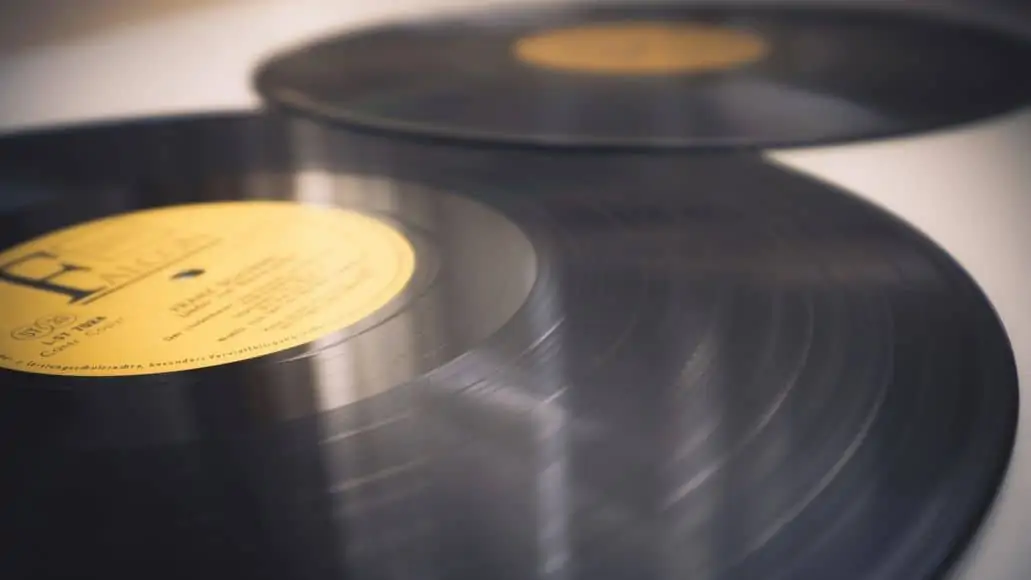
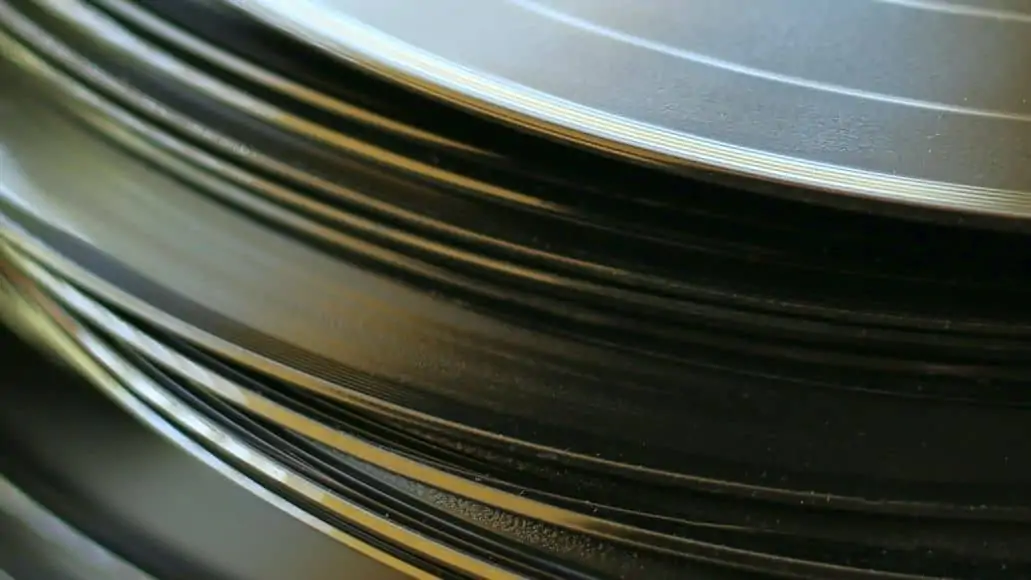


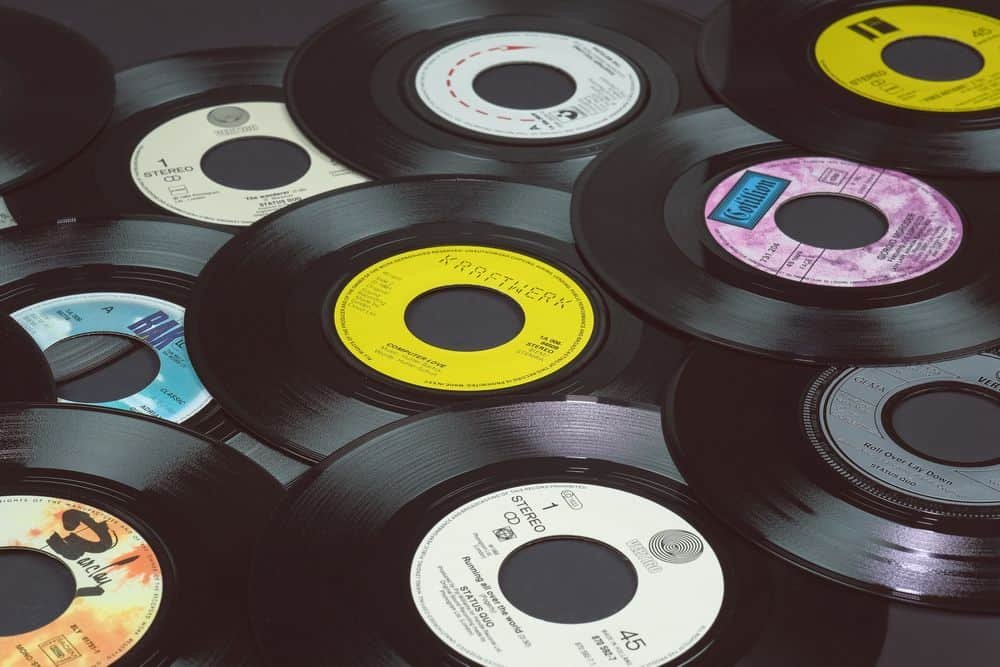

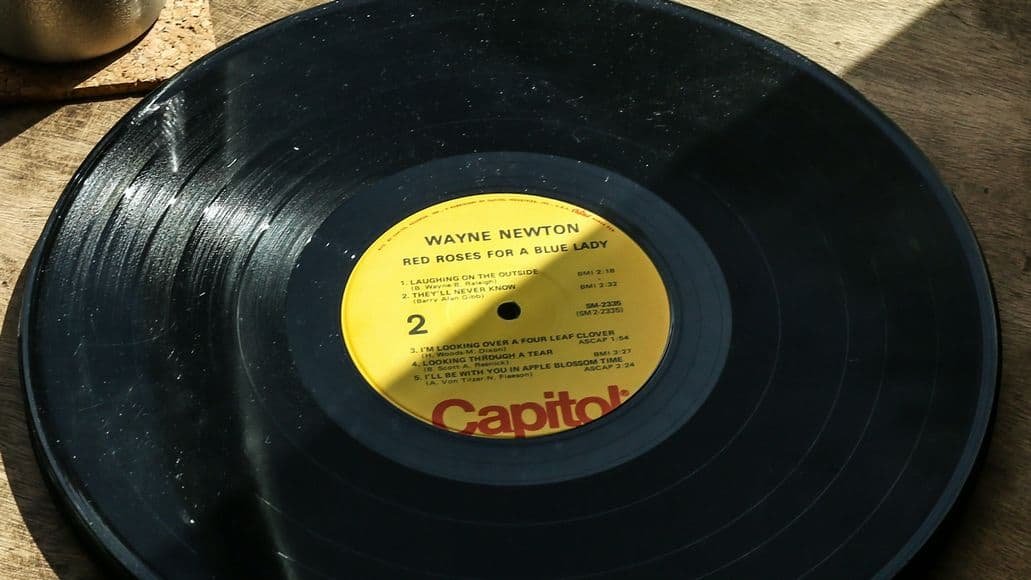
I have found using toothpaste to clean my vinyl.s. I found a bunch of 45’s in an old home, which had been in a flooded basement at one time or another. I was trying to figure out how to clean them because there are so many different ways to clean records. I had heard of using toothpaste on CD’s that had been scratched. I tried this with several records and distilled water to rinse. I took a tube of toothpaste, put some on the record, took my finger and rubbed it all over the record accept the label area, then took a baby’s toothbrush and brushed the record with the toothpaste to make sure I got all the nasty stuff off the records, then I took it and rinsed it in the distilled water. I made sure I removed all the toothpaste, took a soft towel and dried the records. Cleaning the label was a little more tricky. I used another towel and used a little alcohol and cleaned off the labels. Let them dry on their own.
Interesting idea. Never would have thought of it myself, that’s for sure.
I read an article about polishing scuffs out of glass using toothpaste. Apparently toothpaste can be a very effective polishing compound. However the article rated a number of toothpaste varieties according to their abrasiveness. The different toothpastes vary markedly. Some might make a scuff worse. Others might make the scuff vanish. One needs to know which ones to use. If using toothpaste to clean records I presume that one would want to use one of the least aggressive ones.
To protect the label buy 2 – 4 inch auto dent pullers and squeeze them together one on each side of record label and rinse the record with tap water then wipe with a microfiber cloth . Then spray distilled water on record and wipe with new microfiber cloth and set in an old style dish drainer for 20 minutes.
I would not use toothpaste as it is abrasive. The hardness of the abrasive material in it is softer than tooth enamel so it cleans the biofilm off your teeth but does not scratch the enamel. However I think the abrasive is harder than vinyl and will scratch it.
Be careful as toothpaste is abrasive
It’s good to know that records should be cleaned with a carbon fiber brush before and after we play them each time. My husband and I really want to find some of our favorite video game soundtracks on vinyl since we’re big collectors. Thanks for teaching me how to keep the records in the best shape once we get them!
I have several old 78’s made in the 40’s by my grandfather. They were made at home on a record making machine. They’re made from a metal disk with a vinyle or plastic coating. Should I clean these like I would clean a modern record? They are pretty rough.
Thanks
You can clean them by hand using the methods described above. But those records are made from different materials. Do not use any cleaner that contains alcohol. You will destroy them.
Where do you get plastic album sleeves ?
E-bay
I use a website called BagsUnlimited.com they have archival boxes, all combinations of paper, paper with plastic lined or just plastic sleves, plastic sleeves for the while album to fit in, etc. they Also have a variety of sizes from small records to the 180gram variety that take a slightly different size. Enjoy. I have had the archival boxes over 10years. Holding up great.
Wal mart has them
Only right way to clean vinyl record is using this mixture: 400ml destiled water 100ml pure alcochol 99,99% like isopropanol and 2ml fotonal. Nothing else. You can use it for ultrasonic cleaners too. Case closed.
Using the brush supplied with most kits has proven effective with my collection for about 30 years. put a few drops on the velvet brush and spread it evenly in a line on the velvet. with the heel of the bottle. place it on a spinning disc and tip the brush from one side to the other, this will pull out any particles on the disc, use the small brush to clean the velvet brush, a couple of quick swipes will be sufficient, let it dry for about 30 seconds and away you go!
A good friend showed me this method years ago and it works very well. Repeat the process after you have listened to the disc. Repeat for side two and before you put the disc in the sleeve. NO ALCOHOL AT ANY TIME! This will melt the surface over a period of time! My first kit consisted of a velvet brush, a brush to clean it and a bottle of fluid. worked for years and my discs always sounded brand new. I now have over a thousand discs and they mostly sound new. Most of my discs are rare collectibles and I treasure every one. I recently retired after 40 years on the air and used vinyl right up to my last show. There is no need to buy expensive kits. I imagine they all work, come with the same type of velvet brush, and only take a few seconds to use.